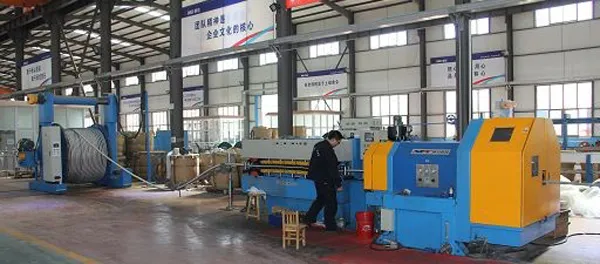Okt . 13, 2024 07:51 Back to list
gate valve non rising
Understanding Non-Rising Stem Gate Valves
Gate valves are critical components in various industrial applications, used primarily for stopping or allowing the flow of liquids and gases. Among the different types of gate valves, non-rising stem gate valves (NRSGVs) hold particular significance due to their design and functionality. This article delves into the essential features, advantages, applications, and maintenance of non-rising stem gate valves.
Definition and Design of Non-Rising Stem Gate Valves
A non-rising stem gate valve operates by raising and lowering the gate within the valve body. Unlike rising stem valves, the stem of an NRSGV does not move vertically; instead, it rotates in conjunction with the gate's motion. This design allows for a more compact installation, making NRSGVs suitable for applications where headroom is limited, such as underground pipelines or in places where vertical space is a concern.
The construction of non-rising stem gate valves typically includes a body, a gate, a stem, and a handwheel or actuator for operation. The gate itself can be made from various materials, including stainless steel, brass, and other metals, depending on the fluid being controlled and the specific application.
Advantages of Non-Rising Stem Gate Valves
One of the primary advantages of non-rising stem gate valves is their space-saving design. Because the stem does not extend above the valve, they can be installed in areas where there is limited vertical space. This characteristic makes them particularly useful in underground applications, such as municipal water supply systems, where installation space is constrained.
Another advantage is the reduced risk of damage to the valve stem. In situations where the valve is exposed to external conditions, such as harsh weather or mechanical impact, the non-rising design minimizes potential damage to the stem since it remains protected within the valve body.
Non-rising stem gate valves also provide a tight seal, preventing leaks when fully closed. This sealing capability is vital in applications where the integrity of the fluid system must be maintained, such as in chemical processing or oil and gas production.
gate valve non rising

Applications of Non-Rising Stem Gate Valves
Non-rising stem gate valves are widely utilized across numerous industries due to their reliable performance and efficiency
. Key applications include1. Water Supply and Distribution NRSGVs are often employed in municipal water systems, where they help control the flow of water through various pipeline networks. 2. Oil and Gas Industry In the oil and gas sector, these valves are used in pipelines to manage the transport of crude oil and natural gas, ensuring that the system operates efficiently and safely. 3. Chemical Processing In chemical plants, non-rising stem gate valves are crucial for controlling the flow of corrosive substances and ensuring the safety of the operation. 4. Fire Protection Systems These valves can also play an essential role in fire protection systems, helping to control the water flow in fire hydrant systems and sprinkler networks.
Maintenance and Considerations
To ensure the long-term performance of non-rising stem gate valves, regular maintenance is necessary. This includes
- Inspection Periodic inspections should be performed to check for leaks, corrosion, or physical damage. Early detection can prevent more significant issues down the line. - Lubrication The stem mechanism should be adequately lubricated to ensure smooth operation and to minimize wear and tear. - Sealing Check The valve seals must be checked regularly to ensure they are functioning correctly and that there are no leaks when the valve is in the closed position.
It is also essential to select the right type of non-rising stem gate valve based on the application requirements, such as pressure rating, temperature, and the type of fluid being controlled.
Conclusion
Non-rising stem gate valves offer a unique combination of space efficiency and reliable operation, making them a preferred choice in various industrial applications. Their design advantages, coupled with their ability to provide a tight seal, make them invaluable in sectors ranging from municipal water supply to oil and gas. Regular maintenance is crucial for ensuring their longevity and optimal performance. As industries continue to innovate and expand, non-rising stem gate valves will remain a key component in managing fluid flow and maintaining system integrity.
Share
-
Reliable Wafer Type Butterfly Valves for Every IndustryNewsJul.25,2025
-
Reliable Flow Control Begins with the Right Ball Check ValveNewsJul.25,2025
-
Precision Flow Control Starts with Quality ValvesNewsJul.25,2025
-
Industrial Flow Control ReliabilityNewsJul.25,2025
-
Engineered for Efficiency Gate Valves That Power Industrial PerformanceNewsJul.25,2025
-
Empowering Infrastructure Through Quality ManufacturingNewsJul.25,2025